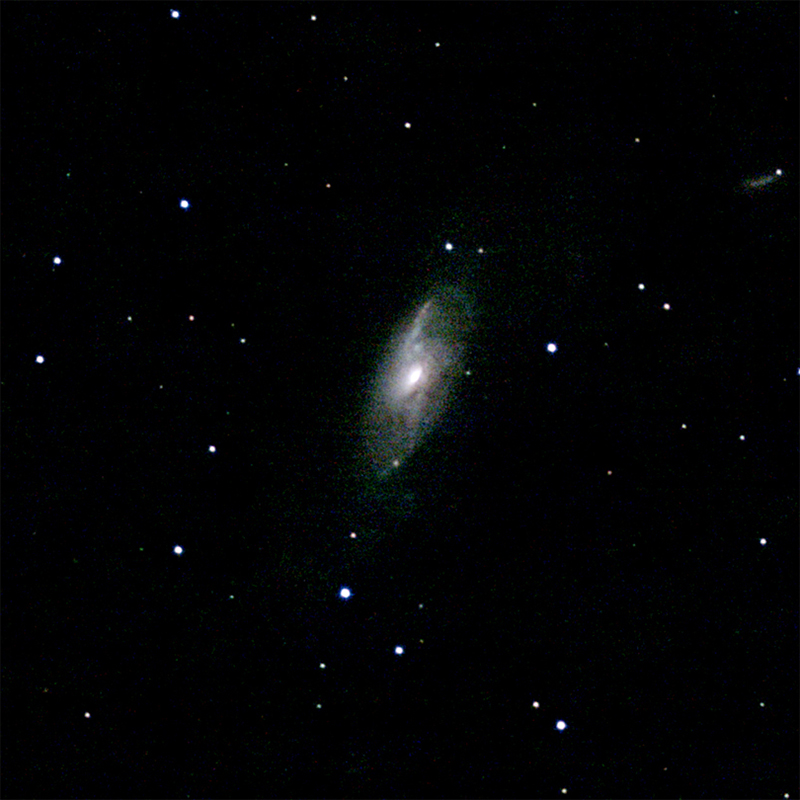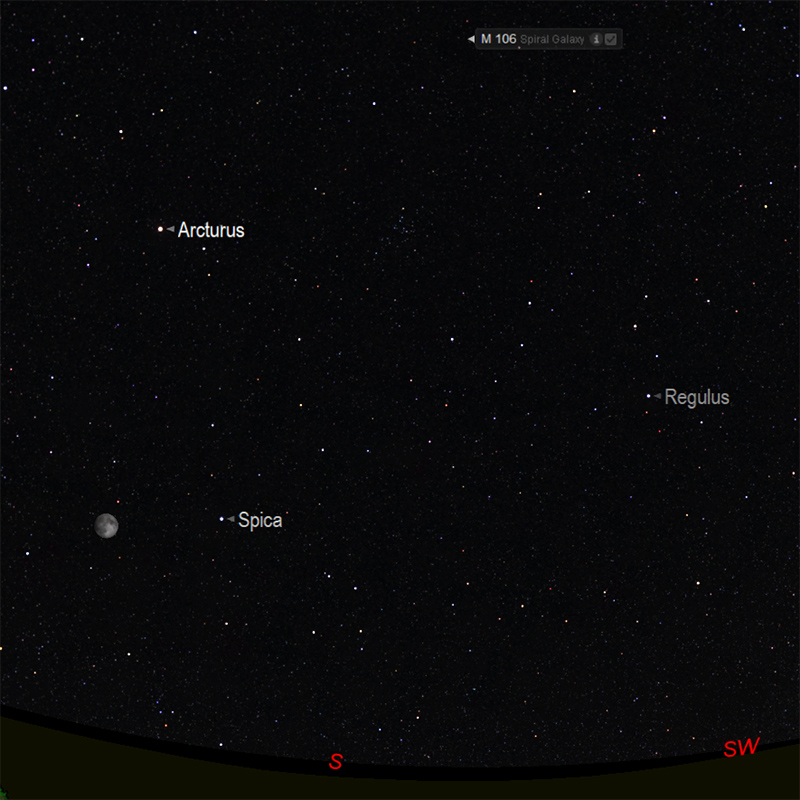M106

Credits: Keith Turnecliff, Long Itchington
The image reveals one of the most striking features of M106: its extra pair of arms. Most spiral galaxies only have one pair of arms, but M106 has an extra set, seen here as red wisps of gas.
Unlike the other arms, these two extra arms are made up of hot gas rather than stars. Astronomers attribute these ghostly arms to the supermassive black hole at the galaxy’s center.
The extra arms appear to be an indirect result of the violent churning of matter around the black hole.
M106 was discovered by Charles Messier’s observing assistant, Pierre Méchain, in 1781. It is located 24 million light-years from Earth in the constellation of Canes Venatici.
Facts about M106 by Keith Turnecliff
Although a larger telescope is needed to resolve detail, M106 has a relatively bright apparent magnitude of 9.1 and can be spotted with a small telescope. It is best observed during May.

Best Viewed with resolution 6248 x 4176.
Credits: Image courtesy of Starry Night Pro Plus 8, researched and implemented by Keith Turnecliff.